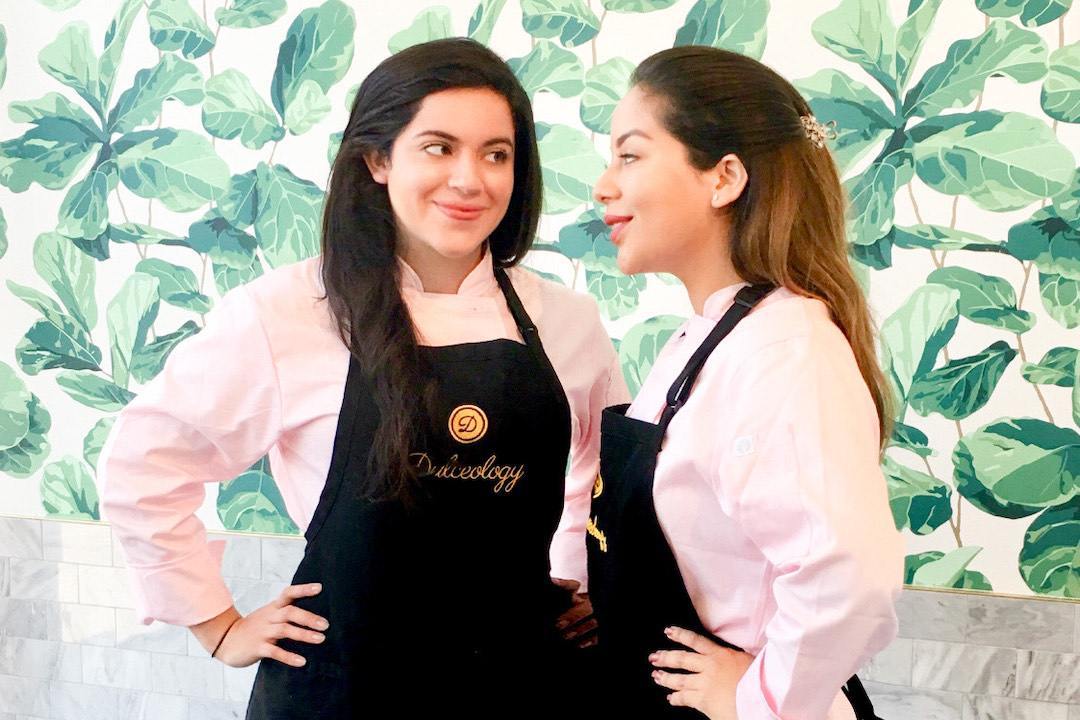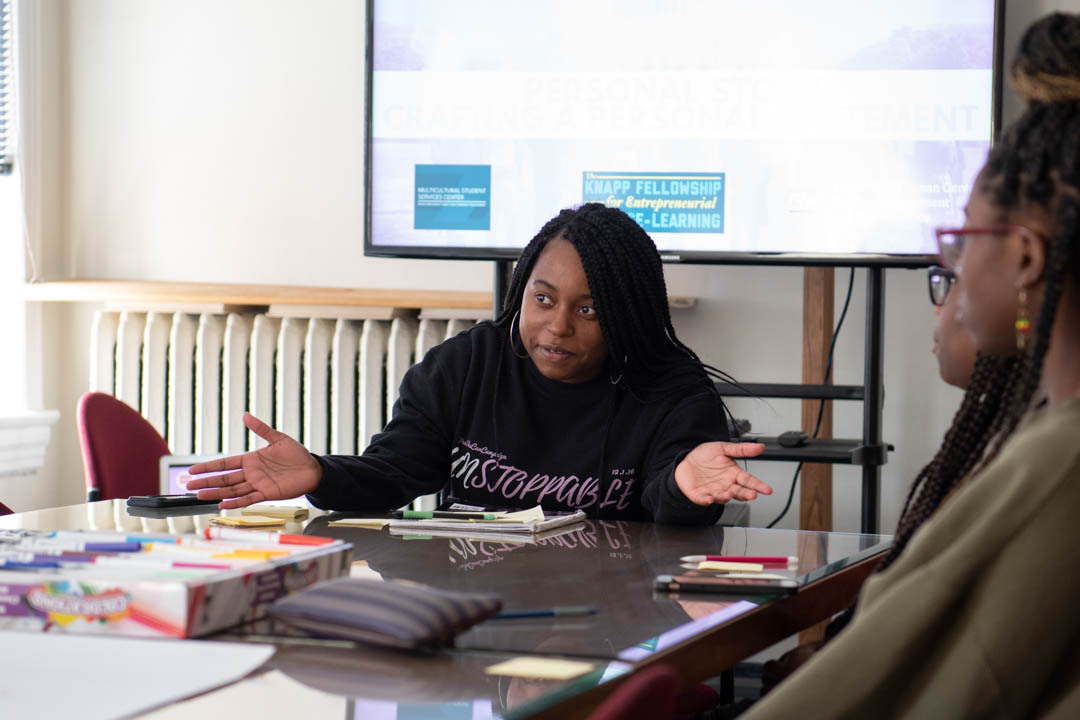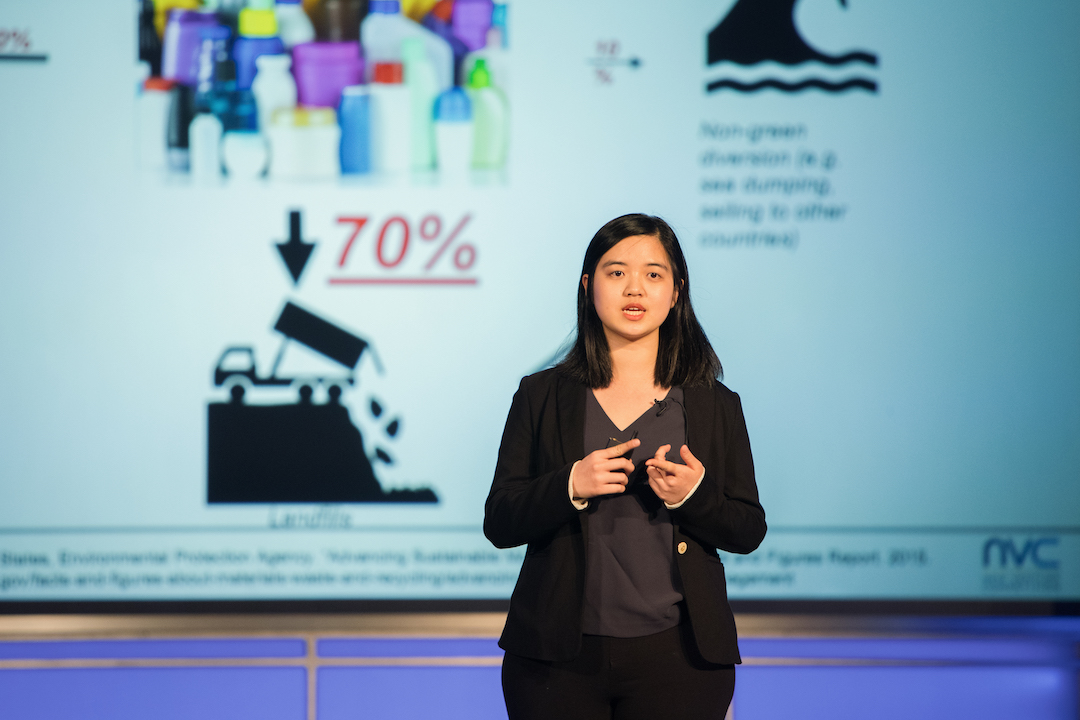By Tatyana Hopkins
Lucas Vining is out for blood.
Through his startup, Ichosia Biotechnology Inc., the sophomore, studying cellular and molecular biology at the George Washington University, is developing a genetically engineered red blood cell product that he hopes will replace the need for millions of pints of human-donated blood each year for important transfusion treatments for cancer, trauma and chronically-ill patients.
The company, which has transformed a research project Mr. Vining proposed in high school into a commercial enterprise, will soon dive into the research necessary to bring its product to life and enter clinical trials after recently raising tens of thousands of dollars in seed money in the latest GW New Venture Competition.
Getting started
Launched last year by Mr. Vining and several other undergraduate students at GW, Ichosia is developing a product called Erythrosyn, which will be synthesized through proprietary genetic engineering techniques that transform stem cells into fully-functioning red blood cells for mass production.
Currently, all transfusions performed in the United States rely on blood from human donors, collected mainly by nonprofit organizations.
“The American Red Cross does a great job collecting donor blood, but it's not a perfect system,” Mr. Vining said. “Scientists have developed new preservatives and testing methods but since we've been using blood transfusions, blood has always come from donors, and that has not changed.”
The company aims to reduce reliance on donors through its on-demand red blood cell production. In turn, the team hopes to address challenges associated with donor blood such as blood scarcity, disease testing of donated blood and the need for cross matching donors and recipients.
Ichosia began as Mr. Vining-Recklitis’ senior thesis research project in high school, where he proposed using the genetic engineering tool CRISPR to modify the reproduction of a stem cell line. At the time, he had no particular application for the cells.
“I thought it would be cool, but my thesis advisor told me we did not have enough money and to hold on to it and work on it as a Ph.D. student in a lab with lots of grant money,” he said.
But he did not want to wait that long.
“I brought my idea with me to GW,” Mr. Vining said.
Realizing that stem cells by themselves are not useful without a specific application, Mr. Vining developed his high school idea as a research project while at GW. Alongside Anna Grim, a junior studying chemistry, they explored potential applications for genetically-engineered red blood cells.
Commercializing
After being denied a university research grant, the pair sought a way to develop their project more quickly.
“We began looking for faster ways to develop our research and deliver an impact on society that was not through academic grants, timelines and qualifications,” Mr. Vining-Recklitis.
Considering that the blood supply market is dominated by non-profit organizations operating on a cost-recovery model, often selling a product for less than what it costs to produce, and that they had a product they could produce for a fraction of the price, the Ichosia team saw great opportunity in the market and moved toward commercialization.
“Commercialization is one of the ways to get research into practice,” said Jim Chung, GW’s associate vice president for research, innovation and entrepreneurship. “Eventually, research needs to make the jump from a laboratory into the hands of the users in order to have broader societal impact. Some research can do this through publishing, open sourcing, while others may require a more commercial route.”
The Ichosia team spent nine months fundraising in an initial round of fundraising, with a goal of $50,000 by the end of this academic year.
“We have doubled our initial goal,” Mr. Vining said.
Collectively, they participated in nearly a dozen business pitch competitions.
Most recently, the group won $40,000 in jumpstart funding in this year’s New Venture Competition.
“Competitions like ours provide a safe place for student entrepreneurs to explore their innovative ideas in a supportive environment with plenty of mentorship, feedback and practice,” Mr. Chung said. “That is as important as the prize money in moving the teams forward.”
Mr. Vining said in addition to the New Venture Competition, OIE has provided the team with a great deal of resources including a professional space to conduct business in the GW I+E Lab, mentor office hours and assistance in applying for the I-Corps program.
“It is nice to not have the classic, live on a couch and eat Chinese food, startup experience,” he said. “There are a lot of resources that the OIE has given us and that other students should take advantage of.”
From left: David Hyon, Lucas Vining-Recklitis, Ahmad Aljaberi and Anna Grim run Ichosia, a winning team of the 2020 GW New Venture Competition.
In the lab
With funding, the team will now shift its focus back to research, Mr. Vining said.
“We had the scientific protocol ready to go last June,” he said. “We just needed the money to carry it out.”
Currently, the team relies on contract research organizations to perform their lab work. However, with more capital, they are considering establishing their own lab.
“It might be the best option to set up our own lab site and do the work ourselves,” Mr. Vining said.
The team expects to be run tests until at least September, after which they hope to have enough research to secure patents and hold another round of fundraising that will lead them through clinical trials.
“We are hopeful that we would be able to introduce the product to clinics through FDA's expanded access program, which allows the clinical deployment of pharmaceuticals and biological products that haven't yet received FDA approval to be used for life-threatening situations,” Mr. Vining said.
He said after investigating the current application of their genetic engineering techniques, the team will research other applications for different types tissue and stem cells such as those that create white blood cells or platelets.
In the long run, he hopes his work will show how valuable genetic engineering can be to clinical and research practices when done ethically.
“Blood banking is a system that has stood for 100 years,” Mr. Vining said. “It's a big shock to change or replace the product. We want to show genetic engineering is not innately bad.”





